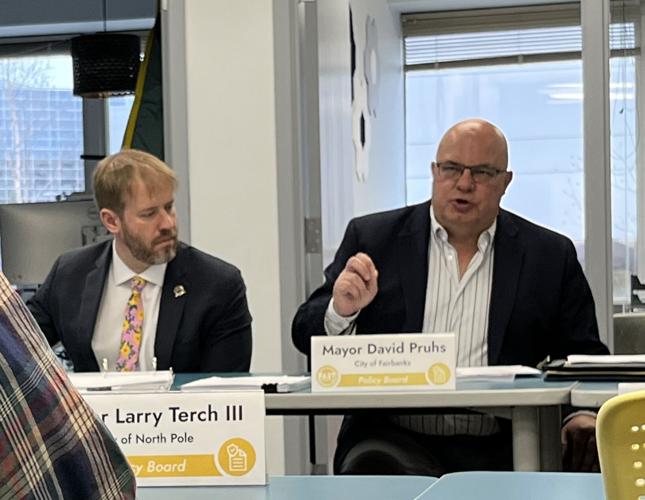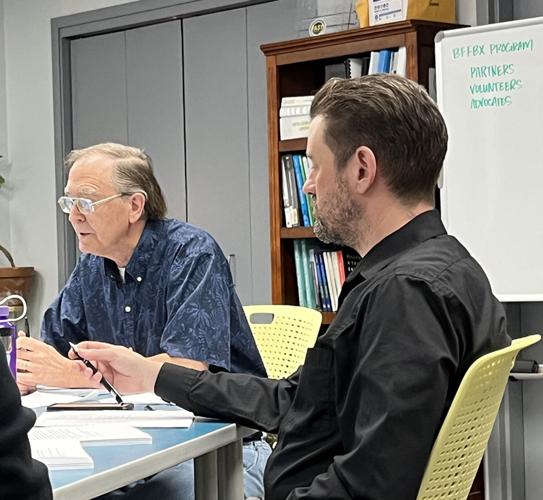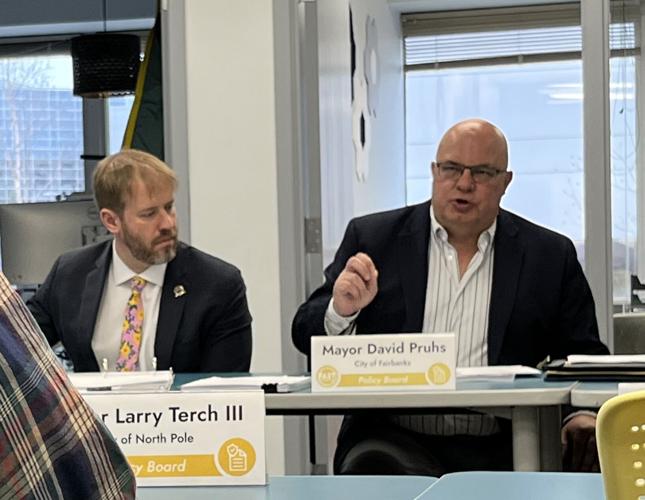A proposed North Pole-area traffic circle will move forward into planning and design after the Fairbanks Area Surface Transportation (FAST) Planning Policy Board approved an amendment to its improvement plan on Wednesday.
The Alaska Department of Transportation (DOT) determined that the intersection at Nordale Road and Peede Road requires improvements due to a history of significant crash data.
The project qualified for federal Highway Safety Improvement Project (HSIP) funding. Available crash data identified a roundabout as the best solution, aligning with Alaska’s and the federal government’s “roundabout first policy.”
FAST Planning Executive Director Jackson Fox said the project will cost $4.8 million, including $1.14 million for design and $3.7 million for construction. Federal highway funds will cover the full cost.
Construction is not expected to begin until 2028.
However, several residents of the North Pole and Nordale Road area, including Barbara Haney and Rep. Mike Prax (R-North Pole), who both live nearby, voiced opposition to the roundabout.
The opposition was significant enough that FAST Planning Policy Board members considered other options, including removing the project from FAST Planning’s Transportation Improvement Program (TIP) amendment. Fox said that doing so would mean forfeiting nearly $5 million in federal funding, which DOT could then reallocate to another region, such as Anchorage or the Matanuska-Susitna Borough.
“The comments have been overwhelmingly in opposition and DOT has seen that,” said Jerry Cleworth, the policy board chair. “But it’s also been commented that something needs to be done (at that intersection).”
Roundabouts and HSIP
Last month, FAST Planning’s technical committee recommended a title change to the project as a compromise. However, Fox noted that a new name would not change the scope — the project would still call for a roundabout as the first option.
DOT Chief Engineer Lauren Little said Alaska adopted a “roundabouts first policy” in the early 2000s. By 2011, the state had 16 roundabouts; today, there are more than 60.
“They were just so overwhelmingly effective at reducing severe crashes from angled collisions at intersections,” Little said. “They break down a certain amount of traffic ... there was a national push to start using them.”
She added that roundabouts are not appropriate for every intersection.
“You can’t necessarily throw one at the Steese Highway/Johansen Expressway intersection,” Little said.
She said the HSIP process ultimately determined that the Nordale/Peede intersection warrants a roundabout.
“Any improvement we make with that specific program has to meet a cost-benefit threshold,” she said. DOT engineers analyze crash patterns, crash costs, and site conditions to determine the most effective solution.
“Roundabouts tend to come in very well in terms of ability to reduce crashes with injuries,” she said.
The North Pole triple roundabouts at the Badger Road/Santa Claus Lane intersection are a key example. Before construction in 2013, 12 major injury crashes occurred over a 10-year period. Since installation, DOT has recorded no injury-related crashes and a 68% reduction in overall collisions.
In contrast, Little said DOT has observed increases in rear-end collisions at some intersections with traffic signals.
The HSIP program is designed to “rapidly deliver safety improvements.” Changing the project’s scope would disqualify it from that funding source and require restarting the planning process.
However, the Nordale/Peede project must first undergo environmental studies and public outreach.
“A project starting doesn’t necessarily mean a project gets built,” Little said. “You still have to get through the environmental process and decision to build.”
‘Neighborhood weigh-in’
Policy Board members were split on the project, with some noting that public opinion was largely opposed. Cleworth proposed adding wording to the TIP project description to give DOT more flexibility. The motion failed in a 3-3 vote.
North Pole Mayor Larry Terch called it a difficult decision, suggesting that DOT explore other options in light of local opposition.
“As much as I want construction money to come to our local area, this is a hard project to get behind,” Terch said. “There are better, more fiscally responsible ways to look at this project.”
Terch agreed that the intersection needs safety improvements, noting that a family member was previously T-boned there. He argued that other solutions might cost less than designing a roundabout.
Cleworth agreed, saying that based on public comments, visibility appeared to be the biggest concern at the intersection.
“The majority of people in the area are not keen on a roundabout, and I tend to go with the neighborhood,” Cleworth said.
Fairbanks North Star Borough Mayor Grier Hopkins said he’s not opposed to roundabouts but wants “to do this project right based on the neighborhood’s desires.”
‘Data-driven’ process
Fairbanks Mayor David Pruhs supported the project based on the FAST technical committee’s recommendation.
“This is data-driven and shows it needs to happen,” Pruhs said. “I’m going to put my belief in that.”
Assemblymember Scott Crass pointed out that DOT engineers used HSIP data in their analysis. He dismissed the idea of choosing a different solution as “undercutting a lot of the work in the analysis and selection of this process.”
“I don’t know that selecting something else is productive,” Crass said. “There’s an abundance of evidence that shows roundabouts are safer than lighted intersections.”
He added that at least 25% of the written comments supported a roundabout at Nordale and Peede. He also cited national data showing public support tends to rise after roundabouts are built.
“People don’t like the idea of a roundabout, but after they are built, they appreciate the safety they provide,” Crass said.
Terch’s motion to remove the project funding failed in a 3-3 vote. The overall project list passed in a 5-1 vote, with Terch casting the lone “no” vote.



